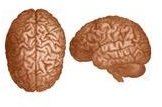Memory and the Brain: Lesson Plan With Teaching Exercises
Prior to the Lesson
After teaching students about basic brain anatomy and different functions of the brain, introduce a more advanced anatomy lesson: how
memory works. Point out to students that they will be using this lesson while studying this lesson! Because it can be difficult for some students to follow the process of consolidation, use flow charts or handouts that explain how information they read on the page becomes stored in their brain. When discussing the different regions of the brain that deal with memory, use a model or an image to help the students create a visual connection.
Teaching About Memory
Start by asking students: where do they get information? Make a list of all of the students’ answers on the blackboard. For example, they may say books, television, radio or doing things themselves.
Then ask them: what senses are they using? Explain that this is sensory memory, where they are gathering different information that their brains will turn into permanent memories. Introduce some new vocabulary: iconic memory for visual memories, echoic memory for auditory memories and haptic memory for touch.
Ask students if they remember everything they hear and see. When they say no, explain it is due to selective attention — that the brain picks and chooses what information it wants to keep. You can do a group experiment with this concept: have two people talk at the front of the class or play two different audio files, then ask students what they heard. Explain to students that once their brains select the information, it goes into short-term memory. Point out that short-term memory can only hold a limited amount of information (7 ± 2 items) for 200 ms; an example is a phone number. You can do another exercise here: chunking. Explain that chunking is a memory technique where a person groups numbers or items together, therefore increasing their short-term memory. Read out some numbers to the students, and ask them to repeat it back to you.
Point out to students that for the brain to remember information for longer than 200 ms, it has to consolidate these memories. Explain that with long term memories, someone can recall that information even years after she learned it. Note to them that this is what they do when they are taking a test.
Location of Memories
Once students have a grasp of how information becomes long-term memories, move on to the part of the brain that controls memory. Point out to students that the hippocampus, which is located in the temporal lobe, plays one of the largest roles in memory. If possible, use a brain model that you can open up to show students that the hippocampus is located in the medial temporal lobe. Explain to students that the hippocampus is responsible for consolidating short term memories into long term students. Point out that if the hippocampus is damaged, the brain cannot create new memories. Introduce the story of H.M., and discuss with students why his case played a huge role in how scientists now understand memory.
Use a Model of the Brain for a Hands-on Activity
Explain to students that other parts of the brain are also involved in memory. Using a brain model or image, show students that working memory (an aspect of short-term memory) is done in the prefrontal cortex and long-term memories are stored in the neocortex. Point out that memories with an emotional connection are linked to the amygdala, and procedural memories, which uses the body, are stored in the cerebellum.
Have students practice by labeling a diagram of a brain, such as the one available through University of Texas Health Science Center at San Antonio.
References
- Carey, Benedict. “H.M., an Unforgettable Amnesiac, Dies at 82.” New York Times, 2008.
- Canadian Institutes of Health Research: Memory and Learning.
This post is part of the series: Lesson Plans on Brain Anatomy
A series of lesson plans on the anatomy of the brain.
